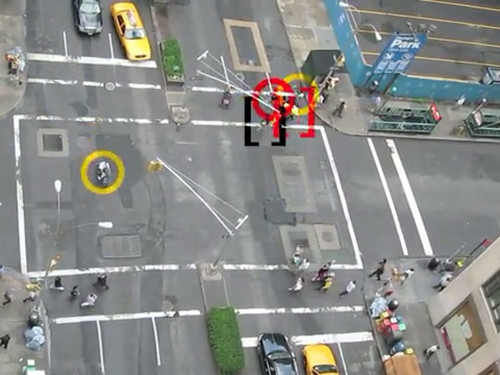27 June 2011
Considering Benefits and Risks: Certainty and severity
I don't know enough about the topic to have an authoritative opinion but it strikes me that this issue is reminiscent of many of the trade-offs that have to be considered in HIAs. Namely, moderate benefits to a larger group of people being traded off against severe impacts for a small group.
The current debate around helmet laws has focused on historical analyses of policy impacts, but there's been relatively little discussion about the role that values should play in guiding decision-making. A precautionary approach might suggest that you need to do everything you can to reduce the incidence of brain and other injuries (a focus on severity). A comparative risk approach might weigh up the scale and degree of benefits to a broader group against the negative impacts on a smaller group(a focus on magnitude).
We can't pretend this sort of decision-making doesn't involve values.
21 June 2011
Non-communicable disease: a global crisis ?
Very interesting graph, showing that in all countries non-communicable diseases are a significant cause of early deaths and only in low income countries do communicable, maternal, perinatal and nutritional disorders cause more early deaths.
A recent paper in The Lancet argues the following:
Non-communicable diseases (NCDs), principally heart disease, stroke, cancer, diabetes, and chronic respiratory diseases, are a global crisis and require a global response.
- is there really a global crisis of NCDs ?
- how is NCD a development issue ?
- are affordable & cost-effective interventions available ?
- do we need high-level leadership & accountability ?
- tobacco control
- salt reduction
- low-cost generic drugs for people at high risk of a heart attack or stroke
18 June 2011
World report on disability 2011
- 15% of the world's population lives with some form of disability
- Of these 2-4% experience significant difficulties in functioning
- Global disability prevalence is 10%
- Global disability is on the rise due to population ageing and the rapid spread of chronic diseases
- health
- rehabilitation
- assistance and support
- enabling environments
- education
- employment
- Make sure disabled people can use the same services as everyone else
- Have services that support disabled people to do things for themselves
- Have a national plan for people with disabilities
- Involve people with disabilities in deciding laws and planning services
- Tell people about disability so that they understand it better
- Make sure there are good quality services that disabled people can afford
- Help the public understand disability
- Collect better information about disability
- Get better at research into disability
15 June 2011
Impacts of micro-credit: a study from the Philippines
Studies of the impact of micro-credit/ micro-loans have painted a mixed picture of the benefits that they deliver. Proponents argue that microcredit mitigates market failures, spurs micro-enterprise growth, and boosts borrowers’ well-being.
Yale and MIT researchers - working with First Macro Bank in Manila, Philippines - set up the financial equivalent of a double-blind trial. First Micro Bank (FMB) provides three-month micro-loans that including fees has an annual interest rate of 60%. FMB is considered a reasonable example of a "second-generation" microloan bank, and it has received support from the US Agency for International Development.
FMB's risk evaluation software was set up to stratify potential borrowers into three categories: low risk, marginal, and high risk (rejected) candidates. The low-risk group got loans, but, for the marginal borrowers, the program was set up to randomly approve a subset, ensuring that there would be experimental and control populations of roughly equal risk. Bank employees had no idea that the selection process had an element of randomness, and in fact, accidentally made loans to five people the software rejected.
The loans went to over a thousand individuals and groups that were reasonably representative of the Manila population as a whole. Then the authors engaged in a little economic stimulation of their own, paying researchers at a local university to conduct follow-up surveys of the loan recipients starting 11 months after the loan. Given a 70 percent response rate, they ended up with information on over 1,100 borrowers.
- There did seem to be a real unmet need for micro-credit ($250 average).
- Business growth did not see any statistically significant boost following the loans. Rather, compared to the control group, those receiving loans ended up owning slightly fewer businesses, and had 31 percent fewer employees (these were small businesses, so 31 percent works ought to be only 0.27 of an employee).
- Subjective well being measures for those who received a loan saw a small and statistically insignificant drop compared to the control group who did not receive loan.
- There were almost no differences in any measures between loans to men and women. The one significant difference is that males seem to have found the loan very stressful (the authors don't comment on whether this explained the drop in subjective well-being).
- Loan recipients did feel that their ability to cope with risk improved, community ties were strengthened community ties and they had better access to informal credit from friends and family afterwards.
Thus, microcredit may work, but through channels different from those often hypothesised by proponents.
[Hat tip John Timmer, Science via Ars Technica , 'Jeepney' image from Wikipedia]
Vale Barbara Starfield, champion of health equity and primary care
We're mobilised, but in a less activist way
HIA'11 Conference in Granada: Final Report
Please find attached the final report of the HIA’11 conference held in April in Granada.
For those of you who could not attend, I take the opportunity to remind you that all videos from plenary sessions are available in original/dubbed version at the EASP live stream webpage together with the Powerpoint presentations and the book of abstracts, among other conference materials.
Great work!
13 June 2011
3 Way Street: ducking and diving on 'Main Street'
http://vimeo.com/24572222
This is a breath-taking MSc thesis video showing the intertwined and interconnected nature of danger and safety on a typical New York junction (read pretty much any major urban centre around the world).
Simply amazing both for what it shows and as a work of art in it's own right.
[Ron Gabriel via Kottke via Gizmodo]
11 June 2011
HIA of the Americas Conference Workshop 17-18th Oct' 2011

The 3rd HIA of the Americas Conference Workshop will be held on October 17th-18th at the California Endowment in Oakland, CA.
It is a two-day workshop that aims to provide leadership to HIA practitioners by offering a forum for HIA practitioners to network, contribute to progress in the field, and share strategies to elevate the practice of HIA. The workshop will also promote excellence in HIA by sharing best practices, discussing issues and challenges, and disseminating newly revised practice standards and guidance.
It is intended for current practitioners of Health Impact Assessment in North, Central or South America and the content will therefore be focused on HIA practice in the Americas.
Registration is limited to 120 participants, and will be taken on a first-come, first-served basis. Participation will be limited to no more than 3 individuals per organisation. Non-Americas participants are welcome.
For more information and to register, click here.
Based on your responses to the registration questions, a member of the planning committee may contact you to discuss your participation.
The deadline to register is Monday, August 8, 2011.
If you have additional questions, you can contact the organisers directly at registration@humanimpact.org.
8 June 2011
References to HIA in Technical Report to the WCSDOH
Assessing the health and equity impacts of different policy options
If reducing health equities is identified as a high level priority across policy-making, there is the possibility to make use of a range of tools to consider equity impacts of policies of various sectors. Two key approaches are the use of health impact assessment and health equity assessment tools. Gender mainstreaming and human rights situation analysis tools can also contribute.
Health impact assessment draws from the methodologies developed for environmental impact assessment, also now being used for poverty and social impact assessments. Not all health impact assessment methodologies, however, focus on health inequities. Equity-focused health impact assessment is a structured process for assessing the potential health equity impacts of a proposal (positive and negative, intended and unintended) and making recommendations for improving the proposal.
Take a look. I think it underplays the importance of HIA's role and doesn't recognise its status as a more widespread field of practice than some of the other interventions advanced.
The People's Health Movement has a response you may want to endorse.
6 June 2011
What's new on the HIA Gateway?
Social Prescribing Hub: MWIA (North Tyneside)
http://www.apho.org.uk/
Asian Mental Health Support Service (Khushi): MWIA
http://www.apho.org.uk/
Guides:
Guide to HIA: California
http://www.apho.org.uk/
Evaluation:
MWIA National Capacity Building programme: outcomes
http://www.apho.org.uk/
Tools:
Health costs of cold dwellings.
http://www.apho.org.uk/
Natural Heritage: a pathway to health (IRH)
http://www.apho.org.uk/
Current Use:
e-HIA News: May Round 2011
http://www.apho.org.uk/
MWIA National Capacity Building programme: outcomes
http://www.apho.org.uk/
Training Courses:
HIA 3 Day Training Course, 26th-29th September, Wales
http://www.apho.org.uk/
2011 HIA of the Americas Workshop 17-18th October, 2011,California
http://www.apho.org.uk/
HIA for Extractive Industries: 1 day course,30th May 2011, Mexico
http://www.apho.org.uk/
HIA Training Course, 14th-18th November 2011, Liverpool
http://www.apho.org.uk/
Mental Wellbeing Impact Assessment Training Course, 5th-7th September 2011, London
http://www.apho.org.uk/
Events:
2011 HIA of the Americas Workshop 17-18th October, 2011,California
http://www.apho.org.uk/
Planning for Healthier Communities, 13th October, London
http://www.apho.org.uk/
Health and Housing workshop, 24th June, Birmingham
http://www.apho.org.uk/
Future Cities 2011 - International Symposium, 15-16th December, 2011, London
http://www.apho.org.uk/
Spatial Planning for Health, 23rd June 2011, Bristol
http://www.apho.org.uk/
The HIA Bibliography has been updated from July 2010 to December 2010, and 26 new references on HIA, SEA and MWIA have been added.






